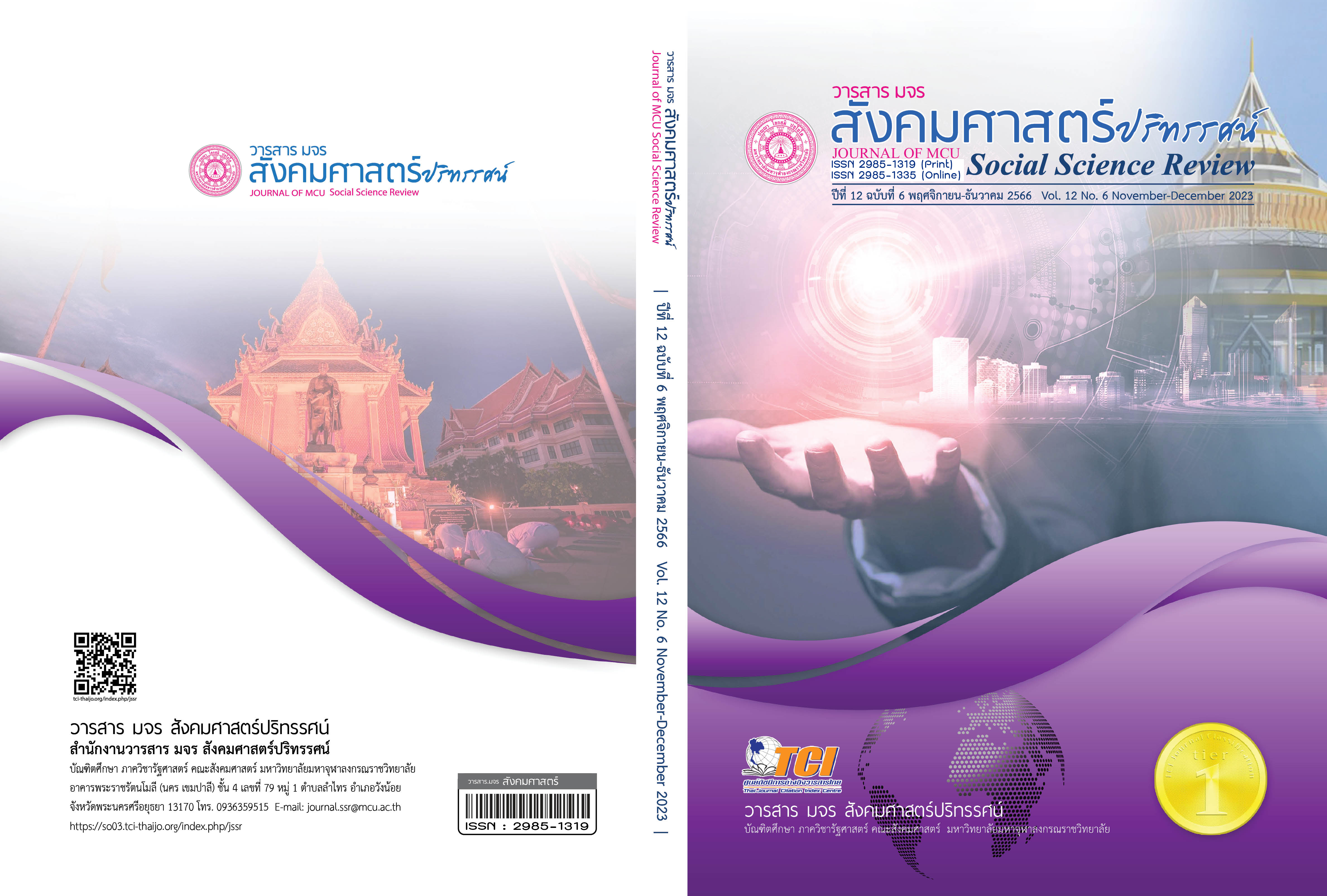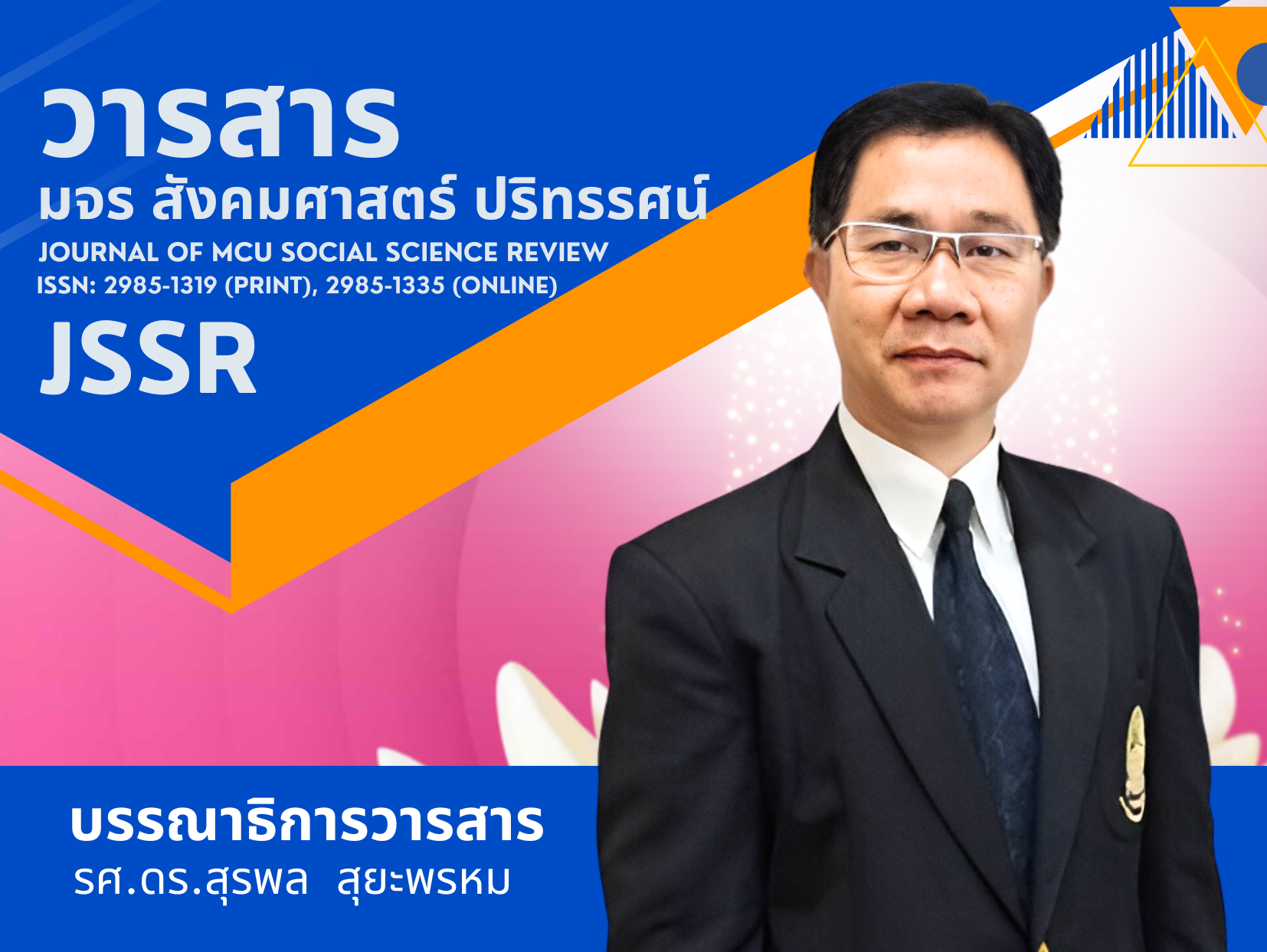วิธีการเรียนการสอนการคิดอย่างมีวิจารณญาณสำหรับชั้นเรียนระดับอุดมศึกษา
คำสำคัญ:
วิธีการสอน, การคิดอย่างมีวิจารณญาณ, ชั้นเรียนระดับอุดมศึกษาบทคัดย่อ
การคิดอย่างมีวิจารณญาณเป็นทักษะที่สามารถเรียนรู้ได้ โดยต้องอาศัยการสอนและการฝึกฝน ผู้สอนหรืออาจารย์สามารถส่งเสริมและพัฒนาการคิดอย่างมีวิจารณญาณของผู้เรียนหรือนักศึกษาในระดับอุดมศึกษาได้โดย 1) ใช้วิธีการเรียนการสอนที่ให้นักศึกษาเข้ามามีส่วนร่วมกับกระบวนการเรียนรู้แทนวิธีการเรียนการสอนแบบบรรยายและการท่องจำ 2) มุ่งไปที่กระบวนการเรียนรู้แทนการมุ่งไปที่เนื้อหาสาระของรายวิชาเพียงอย่างเดียว และ 3) ใช้วิธีการวัดและประเมินผลที่สร้างความท้าทายทางสติปัญญาให้กับนักศึกษาแทนวิธีการวัดและประเมินผลที่มุ่งเน้นการจดจำ โดยข้อจำกัดในการสอนการคิดอย่างมีวิจารณญาณในชั้นเรียนระดับอุดมศึกษามีหลายประการ ได้แก่ การมีอคติของผู้สอนและผู้เรียน การมุ่งสอนเนื้อหาสาระมากกว่าการสอนให้คิด การขาดทักษะการสอนการคิดอย่างมีวิจารณญาณ และการขาดสื่อการเรียนการสอนสำหรับการคิดอย่างมีวิจารณญาณ ซึ่งล้วนขัดขวางสภาพการเรียนรู้ที่ส่งเสริมการคิดการคิดอย่างมีวิจารณญาณ อย่างไรก็ดี อาจารย์สามารถส่งเสริมการคิดอย่างมีวิจารณญาณของนักศึกษาได้โดยใช้วิธีการแสดงกระบวนการของการคิดอย่างมีวิจารณญาณ การเรียนรู้แบบร่วมมือและการใช้ปัญหาในชีวิตจริง การตั้งคำถาม และการโค้ชและการประเมินโดยผู้เรียน โดยอาจารย์ในระดับอุดมศึกษาที่ต้องการส่งเสริมและพัฒนาการคิดอย่างมีวิจารณญาณให้กับนักศึกษาในชั้นเรียนไม่ควรมองนักศึกษาเป็นเพียงแค่ผู้ที่รับข้อมูลที่ทางอาจารย์ส่งให้ แต่ควรมองว่านักศึกษาเป็นผู้ใช้ข้อมูล
References
กระทรวงการอุดมศึกษา วิทยาศาสตร์ วิจัยและนวัตกรรม. (2562). ยุทธศาสตร์การพัฒนานิสิต นักศึกษาในสถาบันอุดมศึกษา (พ.ศ.2560 - 2564). สืบค้น 12 มกราคม 2566, จาก shorturl.at/iEJOX
ทิศนา แขมมณี. (2557). ปลุกโลกการสอนให้มีชีวิตสู่ห้องเรียนแห่งศตวรรษใหม่. สืบค้น 12 มกราคม 2566, จาก https://bit.ly/3INmcus
ธเนศ รัตนกุล. (2560). ในสังคมอุดมความเชื่อ เมื่อไหร่ถึงควรสอนให้เด็ก Critical Thinking เป็น. สืบค้น 12 มกราคม 2566, จาก http://bit.ly/3W9a4qB
สิทธิพล วิบูลย์ธนากุล. (2563). ในวันที่เด็กไทยขาด Critical Thinking. สืบค้น 12 มกราคม 2566, จาก https://www.bangkokbiznews.com/lifestyle/866840
Abrami, P. C., et al. (2008). Instructional interventions affecting critical thinking skills and dispositions: A stage 1 meta-analysis. Review of Educational Research, 78(4), 1102–1134.
Abrami, P. C., et al. (2015). Strategies for teaching students to think critically: A meta-analysis. Review of Educational Research, 85(2), 275–314.
Astleitner, H. (2002). Teaching critical thinking online. Journal of Instructional Psychology, 29(2), 53–77.
Barton, K., & McCully, A. (2007). Teaching controversial issues where controversial issues really matter. Teaching History, (127), 13–19.
Broadbear, J. T. (2003). Essential elements of lessons designed to promote critical thinking. Journal of Scholarship of Teaching and Learning, 3(3), 1–8.
Brodie, P., & Irving, K. (2007). Assessment in work-based learning: Investigating a pedagogical approach to enhance student learning. Assessment & Evaluation in Higher Education, 32(1), 11–19.
Brown, M. N., & Kelley, S. M. (1986). Asking the right questions: A guide to critical thinking (7th Edition). Englewood Cliffs, NJ: Prentice Hall.
Celuch, K., & Slama, M. (1999). Teaching critical thinking skills for the 21st century: An advertising principles case study. Journal of Education for Business, 74(3), 134-143.
Cotter, E. M., & Tally, C. S. (2009). Do critical thinking exercises improve critical thinking skills?. Educational Research Quarterly, 33(2), 3-15.
Davis, L., et al. (2003). Business students’ perceptions of necessary skills. Business Education Forum, 57(4), 18–21.
Daz-Iefebvre, R. (2004). Multiple intelligences, learning for understanding, and creative assessment: Some pieces to the puzzle of learning. Teachers College Record, 106(1), 49–57.
Duplass, J. A., & Ziedler, D. L. (2002). Critical thinking and logical argument. Social Education, 66(5), 10–14.
Dwyer, C. P., et al. (2014). An integrated critical thinking framework for the 21st century. Thinking skills and Creativity, 12, 43-52.
Ennis, R. H. (1989). Critical thinking and subject specificity: Clarification and needed research. Educational Researcher, 18, 4–10.
Ennis, R. H. (1993). Critical thinking assessment. Theory Into Practice, 32(3), 179–186.
Errington, A., & Bubna-Litic, D. (2015). Management by textbook: The role of textbooks in developing critical thinking. Journal of Management Education, 39(6), 774-800.
Facione, P. A. (1990). Critical thinking: A statement of expert consensus for purposes of educational assessment and instruction. Newark, DE: American Philosophical Association.
Facione, P. A., & Facione, N. C. (2001). Analyzing explanations for seemingly irrational choices: Linking argument analysis and cognitive science. International Journal of Applied Philosophy, 15(2), 267–286.
Gambrill, E. (2006). Evidence-based practice and policy: Choices ahead. Research on Social Work Practice, 16(3), 338–357.
Haynes, T., & Bailey, G. (2003). Are you and your basic business students asking the right questions?. Business Education Forum, 57(3), 33–37.
Hemming, H. E. (2000). Encouraging critical thinking: But…what does that mean? Journal of Education, 35(2), 173.
Holmes, J., & Clizbe, E. (1997). Facing the 21st century. Business Education Forum, 52(1), 33–35.
Hou, H., et al. (2007). An analysis of peer assessment online discussions within a course that uses project-based learning. Interactive Learning Environments, 15(3), 237–251.
Kang, N., & Howren, C. (2004). Teaching for conceptual understanding. Science and Children, 42(1), 28–32.
Kotsiou, A., et al. (2022). A scoping review of Future Skills frameworks. Irish Educational Studies, 41(1), 171-186.
Ladyshewsky, R. K. (2006). Peer coaching: A constructivist methodology for enhancing critical thinking in postgraduate business education. Higher Education Research and Development, 25(1), 67–84.
Lai, E. (2011). Critical thinking: A literature review. Retrieved January 12, 2023, from bit.ly/3QBrYku
Landsman, J., & Gorski, P. (2007). Countering standardization. Educational Leadership, 64(8), 40–41.
Leh, S. K. (2007). Preconceptions: A concept analysis for nursing. Nursing Forum, 42(3), 109-122.
Lundquist, R. (1999). Critical thinking and the art of making good mistakes. Teaching in Higher Education, 4(4), 523–530.
MacKnight, C. B. (2000). Teaching critical thinking through online discussions. Educause Quarterly, 23(4), 38–41.
McPeck, J. E. (1981). Critical thinking and education. London, UK: Routledge.
Pithers, R. T., & Soden, R. (2000). Critical thinking in education: A review. Educational Research, 42(3), 237–249.
Rippin, A., et al (2002). A complex case: Using the case study method to explore uncertainty and ambiguity in undergraduate business education. Teaching in Higher Education, 7(4), 429-441.
Sandholtz, J. H., et al. (2004). Standards gaps: Unintended consequences of local standards-based reform. Teachers College Record, 106(6), 1177–1202.
Schafersman, S. D. (1991). An introduction to critical thinking. Retrieved January 12, 2023, from bit.ly/3kflaNf
Scriven, M., & Paul, R. (2007). Defining critical thinking. Retrieved January 12, 2023, from http://bit.ly/3CKsyaa
Sheldon, K. M., & Biddle, B. J. (1998). Standards, accountability, and school reform: Perils and pitfalls. Teachers College Record, 100(1), 164–180.
Siegel, H. (1991). The generalizability of critical thinking. Educational philosophy and Theory, 23(1), 18-30.
Tempelaar, D. T. (2006). The role of metacognition in business education. Industry and Higher Education, 20(5), 291–297.
Wong, D. (2007). Beyond control and rationality: Dewey, aesthetics, motivation, and educative experiences. Teachers College Record, 109(1), 192–220.
World Economic Forum. (2018). The Future of Jobs Report 2018. Retrieved January 12, 2023, from www.weforum.org/docs/WEF_Future_of_Jobs_2018.pdf
Downloads
เผยแพร่แล้ว
How to Cite
ฉบับ
บท
License
Copyright (c) 2023 วารสาร มจร สังคมศาสตร์ปริทรรศน์

This work is licensed under a Creative Commons Attribution-NonCommercial-NoDerivatives 4.0 International License.
เพื่อให้เป็นไปตามกฎหมายลิขสิทธิ์ ผู้นิพนธ์ทุกท่านต้องลงลายมือชื่อในแบบฟอร์มใบมอบลิขสิทธิ์บทความให้แก่วารสารฯ พร้อมกับบทความต้นฉบับที่ได้แก้ไขครั้งสุดท้าย นอกจากนี้ ผู้นิพนธ์ทุกท่านต้องยืนยันว่าบทความต้นฉบับที่ส่งมาตีพิมพ์นั้น ได้ส่งมาตีพิมพ์เฉพาะในวารสาร มจร สังคมศาสตร์ปริทรรศน์ เพียงแห่งเดียวเท่านั้น หากมีการใช้ภาพหรือตารางหรือเนื้อหาอื่นๆ ของผู้นิพนธ์อื่นที่ปรากฏในสิ่งตีพิมพ์อื่นมาแล้ว ผู้นิพนธ์ต้องขออนุญาตเจ้าของลิขสิทธิ์ก่อน พร้อมทั้งแสดงหนังสือที่ได้รับการยินยอมต่อบรรณาธิการ ก่อนที่บทความจะได้รับการตีพิมพ์ หากไม่เป็นไปตามข้อกำหนดเบื้องต้น ทางวารสารจะถอดบทความของท่านออกโดยไม่มีข้อยกเว้นใดๆ ทั้งสิ้น




